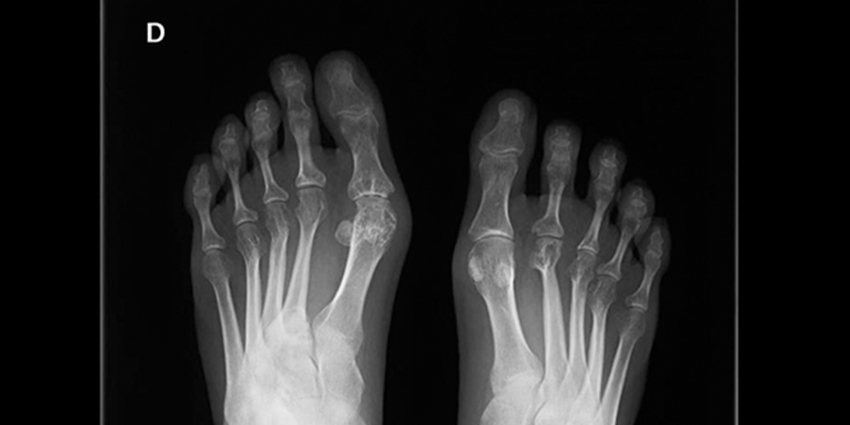There are more than 100 different forms of arthritis and related diseases. The most common types include osteoarthritis (OA), rheumatoid arthritis (RA), psoriatic arthritis (PsA), fibromyalgia and gout. All of them cause pain in different ways.
Osteoarthritis (OA):
The Arthritis Foundation says Osteoarthritis (OA) is the most common type of arthritis. Onset typically occurs in middle aged individuals or due to a previous injury or obesity.
Osteoarthritis was long believed to be caused by the wearing down of joints over time. But scientists through the Arthritis Foundation now see it as a disease of the joint.
Symptoms of OA tend to build over time versus a sudden onset.
Symptoms can include:
- Pain or aching in the joint during activity, after prolonged activity or at the end of the day.
- Joint stiffness usually occurs first thing in the morning or after resting.
- Limited range of motion that usually loosens up after movement.
- Clicking or cracking sound when a joint bends or rotates.
- Swelling around a joint.
- Muscle weakness around the joint or the joint above.
- Joint instability or buckling (i.e. knee gives out).
OA can affect different parts of the body:
- Hips: Pain typically radiates and is felt in the groin area or buttock and sometimes on the inside of the knee or thigh.
- Knees: A “grating” or “scraping” feeling when moving the knee. Knee buckling or the feeling it will buckle (instability) is common.
- Feet: The most common joint affected is the big toe. The joint will feel painful and tender to touch. Range of motion decreases and the big toe joint typically increases in size due to calcification (often called a bunion).
- Ankles: Pain or a feeling of a pinch sensation while walking. The joint is commonly restricted from bending or twisting.
- Toes: Toes become fixed in claw or mallet deformity. Ache and possible swelling is common.
Joints have cartilage which act to reduce wear on a joint. As OA gets worse, cartilage may get uneven edges and cracks. Bones may harden, change shape and get bumpy. Once cartilage breaks down, it doesn’t grow back on its own.
Here are some things that may contribute to the development and progression of OA:
- Age: The risk of developing OA increases when someone gets older. Your bones, muscles and joints are also aging and the cartilage breaks down.
- Joint injury: A break, sprain or previous strain, can lead to OA due to compromised integrity of the joint structure
- Overuse: Repetitive strain or using the same joints over and over in a job or sport can result in OA.
- Obesity: Extra weight puts more stress on joints and fats cells are known to promote inflammation.
- Weak muscles: Muscles assists in joint range of motion. The saying “motion is the lotion” or “if you don’t use it you lose it” stands true. Joints can get out of the right position and “miss-align” when there’s not enough muscular support around them.
- Genes/Hereditary: A family history of OA means you are more likely to develop OA.
- Sex: Researchers with the Arthritis Foundation have found women are more likely to develop OA than men.
Rheumatoid Arthritis (RA):
Rheumatoid Arthritis is a long-term, progressive, and disabling autoimmune disease. It causes inflammation, swelling, and pain in and around the joints and other body organs. RA usually affects the hands and feet first, but it can occur in any joint. It is commonly associated with progressive disfigurement of the hand and/or the feet over time.
The Arthritis Foundation says this happens when inflammation attacks the synovium (the soft membrane lining the joints), which causes the joints to swell and bulge.
The inflammatory process contributes to the weakness and added stretch of the tendons. This can increase the chance of rupture to the tendons supporting the joints. Tendons connect the muscles to the bones in the joints. When this attack happens it can ultimately cause the joints to become displaced and disfigured.
https://arthritis.org/better-living-toolkit/rheumatoid-arthritis
**An autoimmune disease is a condition in which your immune system mistakenly attacks your body
How can we help:
Custom Foot Orthotics:
Custom foot orthotics promote proper joint posture and alignment. Proper joint posture helps the muscles and tendons move more efficiently, ultimately protecting the joints. Custom foot orthotics also assist with the redistribution of force. When shock absorption is reduced due to the wearing of the synovium (natural shock absorbers), orthotics can help by redistributing the force away from the affected joints and reduce painful mechanics of the joint.
Bracing:
Supporting the joint externally. Research has shown that more than 70% of patients with OA of the knee report significant improvements in pain, a reduction in pain medication, and increased activity levels when using a custom brace.
Footwear:
Reduced ankle or foot range of motion can create significant compensations through the knee, hip and back. By choosing the appropriate shoe with the proper footwear features and footwear design, you can help reduce these detrimental compensations.
Compression:
Foot, ankle and knee arthritis can contribute to the dysfunction of the “pump” that moves the fluid out of the leg due to reduced joint range of motion when walking. Graduated compression reduces the amount of fluid and edema that can pool in the lower leg.

